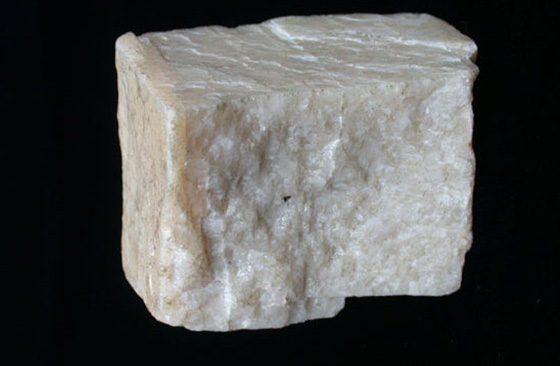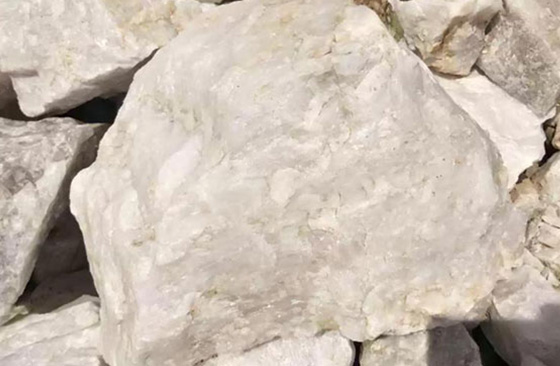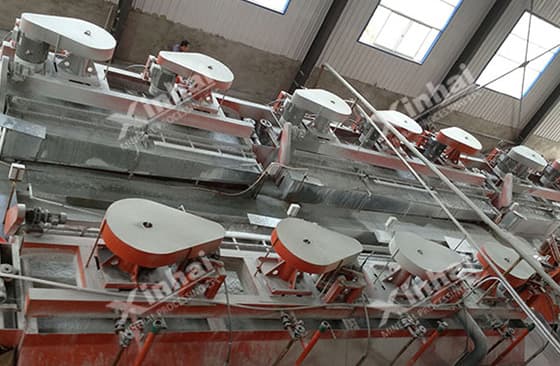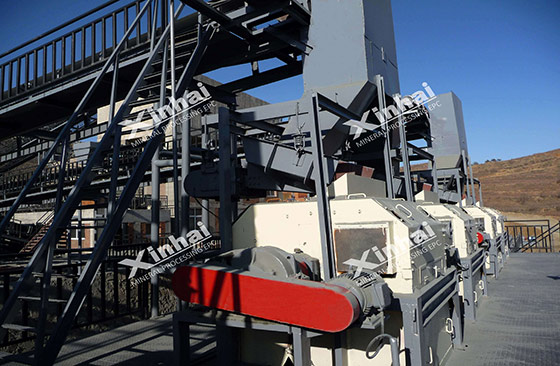
Feldspar and quartz are among the most abundant minerals in the Earth's crust. They are widely distributed in various types of deposits. Their abundance ensures a stable and reliable supply for industrial applications, making them valuable resources in ore resource utilization. In order to ensure the long-term availability of feldspar and quartz resources, the separation process of quartz and feldspar should be optimized to efficiently utilize these minerals. Since feldspar and quartz are often symbiotic minerals, it is necessary to effectively separate these two minerals when sorting. The following will introduce the reasons for the separation of quartz and feldspar and the separation methods for these two kinds of minerals.

The main purpose of separating feldspar and quartz during beneficiation is to remove impurities and improve the quality of the final product. Here are a few reasons why feldspar and quartz need to be separated:
1. Impurity removal: Feldspar and quartz usually coexist in ore deposits with other minerals and impurities. Separating feldspar and quartz selectively removes impurities associated with each mineral. These impurities may include iron oxides, mica, clay minerals and other unwanted components. By separating feldspar and quartz, the level of impurities in the final product can be reduced, increasing its purity and quality.
2. Market needs and specific applications: Feldspar and quartz have different industrial applications and market needs. Feldspar is commonly used as a flux in ceramics, glassmaking and metallurgical processes. Quartz has various uses in the glass industry, electronics, building materials, and the silicon industry. Separation of feldspar and quartz allows the production of different products tailored to specific market needs and application requirements.
3. Ore value and economic considerations: Feldspar and quartz may have different economic values, and their separation can enable the extraction and recovery of valuable minerals. By separating these minerals, a higher concentration of target minerals can be obtained, thereby maximizing the economic value of the ore.

4. Processing efficiency: Feldspar and quartz usually have different physical and chemical properties, such as density, magnetic susceptibility and surface characteristics. During beneficiation, these differences can be exploited to optimize separation efficiency. By targeting the specific properties of feldspar and quartz, beneficiation techniques can be implemented that maximize recovery of valuable minerals and minimize process losses.
Overall, the separation of feldspar and quartz during beneficiation is critical to improve product quality, remove impurities, meet market demands, maximize economic value and optimize process efficiency. It makes it possible to produce high-quality products with specific characteristics to meet the needs of various industrial applications.
To efficiently separate feldspar and quartz ores, the following methods can be used:

1. Froth flotation method
Froth flotation is a commonly used method for separating minerals according to their surface properties. In this separation process, collectors are added to the slurry, and these collectors selectively attach to the surface of the feldspar, leaving the quartz behind. Air bubbles are then introduced to float the feldspar particles to the surface, forming a foam where they can be collected. The remaining slurry, which contains quartz, can be discharged as tailings.
2. High gradient magnetic separation method
High-gradient magnetic separation is an effective method for separating the weakly magnetic mineral feldspar from the nonmagnetic mineral quartz. High-gradient magnetic separation uses a magnetic field gradient to selectively trap and remove paramagnetic particles while allowing diamagnetic particles to pass through. This technique is very useful for separating fine-grained feldspars and quartz.

3. Electrostatic separation method
Electrostatic separation exploits differences in the electrical conductivity or surface charge properties of minerals. Feldspar and quartz can be separated based on their different electrical behavior by applying an electric field in the ore mixture. Feldspar, as the more conductive mineral, will be attracted to the positively charged electrode, while quartz, as the less conductive mineral, is repelled and can be collected separately.
4. Gravity separation method
Gravity separation techniques, such as spiral chutes or shakers, can separate feldspar and quartz based on their different densities. Since quartz is denser than feldspar, it will sink to the bottom under the influence of gravity, while feldspar particles are suspended in water. Separation efficiency can be optimized by adjusting the inclination and flow rate.

5. Chemical treatment
Chemical treatments can be used to selectively dissolve or alter the surface properties of one mineral while leaving the other unaffected. For example, ores can be treated with acids or bases to selectively dissolve or change the properties of feldspar, while leaving quartz unchanged. This facilitates subsequent physical separation.
It is important to note that the efficiency of these separation methods may be affected by the specific characteristics of the ore and the desired product quality. It is recommended to carry outbeneficiation test analysis and optimize the process parameters to achieve the highest separation process efficiency of feldspar and quartz ore in specific cases. This can improve the utilization rate of feldspar and quartz resources. Xinhai Mining can provide you with customized feldspar and quartz beneficiation equipment. Welcome to leave a message for consultation.
To find out more about our products and solutions, please fill out the form below and one of our experts will get back to you shortly.